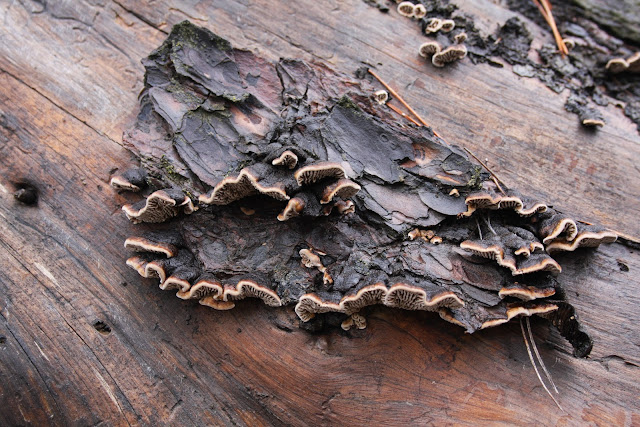Last weekend, Dear Husband and I hiked in Dibeen Forest/Nature Reserve. It was supposed to be a hike, but it turned out to be a gentler nature walk as Dear Husband patiently waited for me to admire and then photograph the enchanting beauty of the forest. A week later, and I am still enchanted by the lingering memory of the beauty found in the forest. It is no wonder that poets from Virgil to Spenser to Dante to Longfellow to Tolkien imagined the magic of the forest.
This is the forest primeval. The murmuring pines
and hemlocks,
Bearded with moss, and in garments green, indistinct
in the twilight,
Stand like Druids of eld, with voices sad and pro-
phetic,
Stand like harpers hoar, with beards that rest on their
bosoms.
Loud from its rocky caverns, the deep-voiced neigh-
boring ocean
Speaks, and in accents disconsolate answers the wail
of the forest...
from Evangeline, Henry Wadsworth Longfellow
- "But the forest is queer... And the trees do not like strangers. They watch you. They are usually content merely to watch you, as long as daylight lasts, and don't do much... But at night things can be most alarming, or so I am told. I have only once or twice been in here after dark, and then only near the hedge. I thought all the trees were whispering to each other, passing news and plots along in an unintelligible language; and the branches swayed and groped without any wind."
- —Merry, Fellowship of the Ring, J.R.R. Tolkien

Yes, I'm glad that we visited the forest during daylight hours--especially the Arbutus trees.-

And as I took a picture of Dear Husband sitting on this downed giant, I noticed some interesting "scribbles" on the side of its trunk. Upon closer inspection, I discovered a few different kinds of fungi.
Though no wildflowers were in bloom, the usual beauty that I have my eyes attuned to on such walks, the discovery of the fungi encouraged a closer look at the winter beauty which the forest had to offer. My eyes were next delighted by the yellow and green lichens found on trees and rocks alike...
and by the exquisite markings of the cyclamen leaves, bearing hopeful witness that flowers are soon to come.
And then there was the beautiful bronze of the turning leaves of the Arbutus tree.
The smooth, bronze, twisted limbs of the Arbutus always inspire my imagination. I thought this limb resembled a well developed bicep. "Very well developed," adds Dear Husband.
And these three friends--what might they be discussing after dark?
The Arbutus tree is commonly known as the Strawberry tree. I had always thought it was so named because of its sort-of-but-not-really strawberry colored bark, but I discovered the true reason for its name when we happened upon of a grove of Strawberry trees bearing bright red fruit.
The Palestine Oak is another tree found in the higher altitudes of the Dibeen forest.
We happened upon a couple of clearings planted with olive groves. They looked so beautiful but one site I read said that local farmers had illegally cleared some areas and planted olive trees, degrading the natural flora. Perhaps this is one the areas referred to.
Exiting this forest we passed under the banner of this errant limb, pondering how it continued to grow sideways instead of toward the sun. I obviously missed something in my botany study.
I hope to return to Dibeen this spring for some orchid hunting...







































